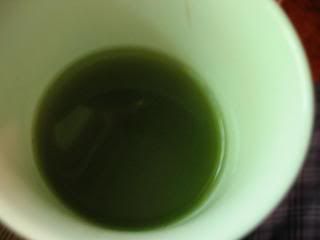Jan 3rd, '09, 21:46
Posts: 20891
Joined: Apr 22nd, '06, 20:52
Scrolling: scrolling
Location: Back in the TeaCave atop Mt. Fuji
High grade Long Jing, Dragon Well, can look pretty light green in leaf while lesser grades that have been over fired to improve a lower grade leaf may appear somewhat brown. This can translate in darker or more brown brew as well.
Japanese green is virtually never brown unless it is roasted.
Generally, Chinese greens can appear more on the brown side than Japanese greens.
Japanese green is virtually never brown unless it is roasted.
Generally, Chinese greens can appear more on the brown side than Japanese greens.
blah blah blah SENCHA blah blah blah!!!
Jan 3rd, '09, 22:50
Vendor Member
Posts: 2084
Joined: Sep 24th, '08, 18:38
Location: Boston, MA
Some green teas naturally look greener than some others. For the same kind of tea, very often, when it gets old, it gets paler and browner.
For example, these are contrasts between a new and an old liu an gua pian (melon seeds).



Melon seeds have relatively longer shelf life. The old melon seeds, I won't treat guests with it, but I am so thrifty that I still drink it from time to time Some other green teas get "old" and browner much faster.
Some other green teas get "old" and browner much faster.
For example, these are contrasts between a new and an old liu an gua pian (melon seeds).



Melon seeds have relatively longer shelf life. The old melon seeds, I won't treat guests with it, but I am so thrifty that I still drink it from time to time
By sitting in peace and doing nothing,
You make your one day worth two days.
You make your one day worth two days.
